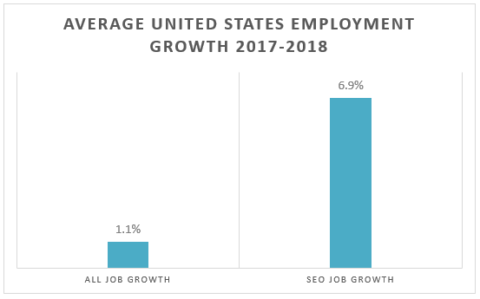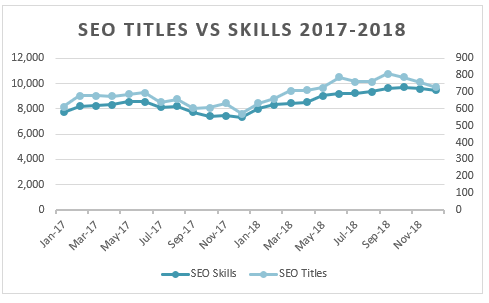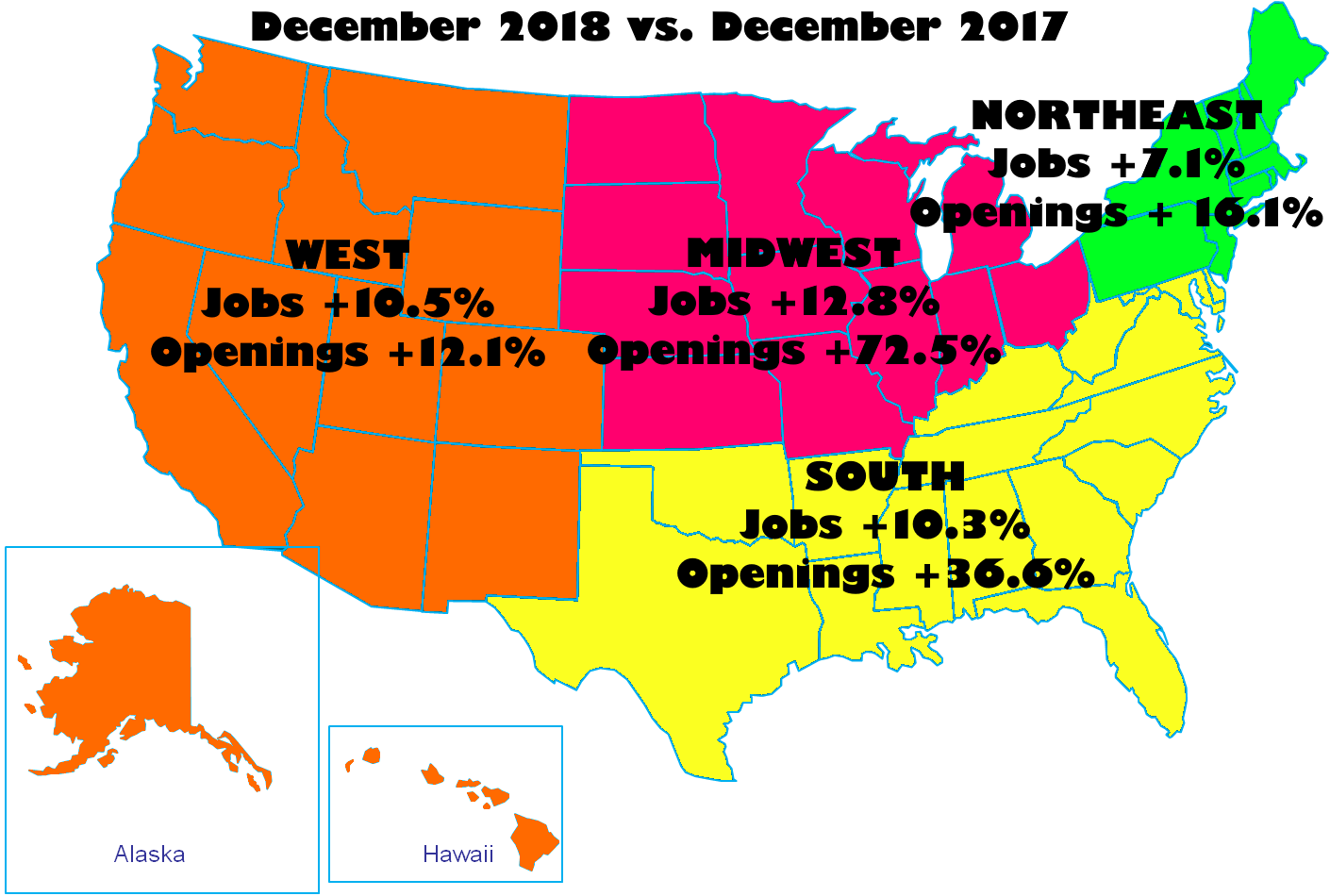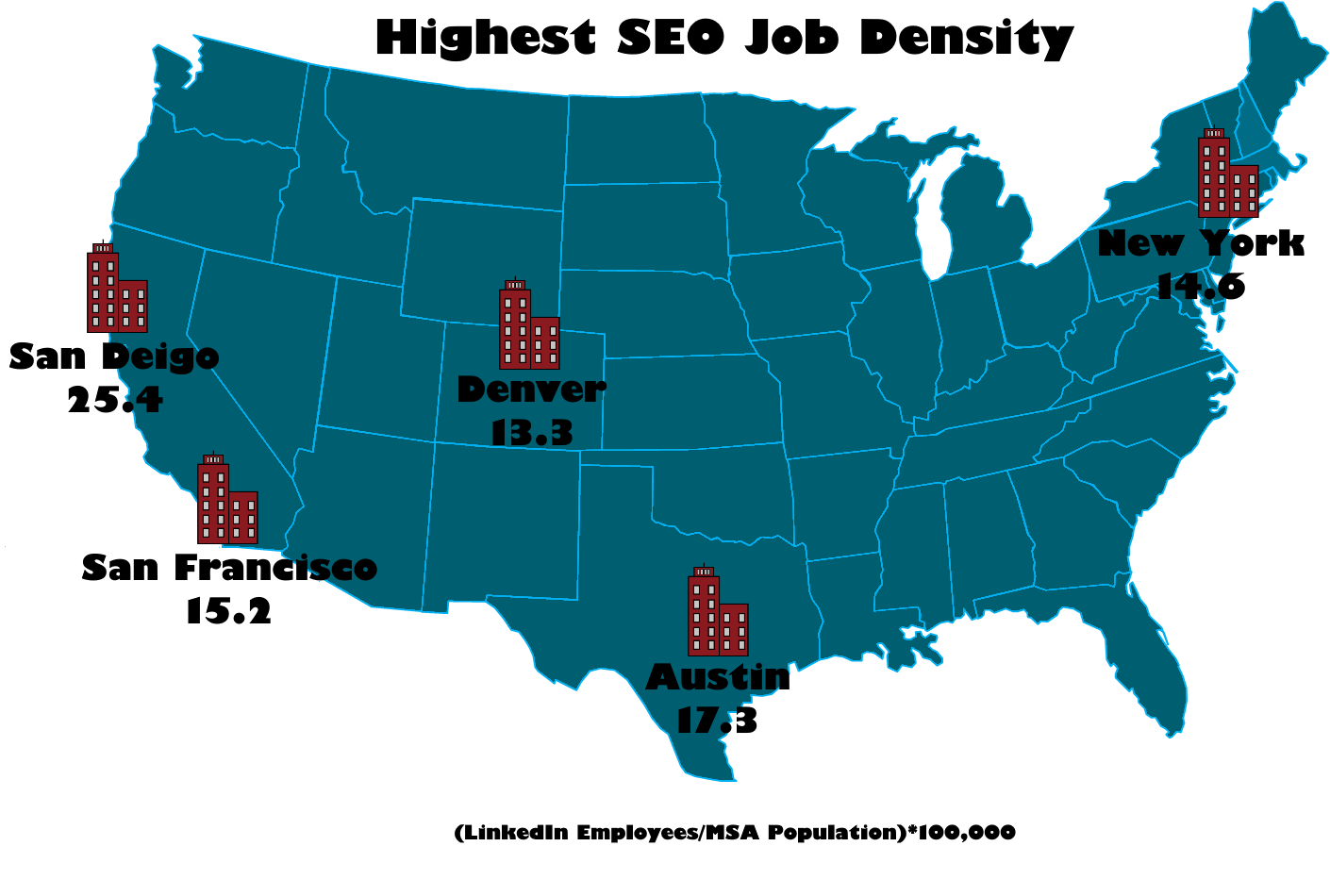While the idea of SEO being dead is nothing more than worn out, industry fodder, SEO as a job title and role have been legitimately questioned.
Not so long ago, the trajectory of the SEO career raised more than its fair share of eyebrows.
Think about it. Just a few years ago, SEO jobs had an annual decline for the first time ever.
And a few years before that, SEOmoz made a strategic decision to hedge its bets with a more generalized name and toolset (the latter of which didn’t stick).
So, will the SEO role get replaced by digital marketing generalists?
Since May 2016, I have been collecting data from Indeed and LinkedIn each month to help answer this and many other related questions.
From this research, here are the five most interesting SEO career trends as we kick off 2019.
1. SEO Jobs Grew 6x Faster Than the U.S. Job Market in 2018

Sources: BLS Civilian Labor Force and Indeed job titles containing “SEO” within 75 most populous U.S. metros.
It was a good year for jobs in the United States in 2018, with the average monthly Civilian Labor Force increasing by just over 1 percent. However, the growth of SEO jobs in the 75 most populous metros put it to shame by a nearly 7 percent uptick.
If you set aside monthly averages (January to December 2018 vs. 2017) and just compare December 2018 to 2017, the numbers are even more staggering.
| U.S. Job Type | Dec. 2017 – Dec. 2018 Growth |
|---|---|
| All Jobs | 1.6 percent |
| SEO Jobs | 9.8 percent |
2. The SEO Title Hasn’t Gone Anywhere

Sources: Indeed job titles containing “SEO” and jobs with “SEO” anywhere in the title or description within 75 most populous U.S. metros.
One way to track if SEO is losing its grip as a title and being replaced as a skill in broader roles is to compare the trends of two types of job openings: SEO titles and SEO anywhere in the job description.


In 2017, the average monthly Indeed openings for SEO titles divided by openings with SEO anywhere in the listing was 8.07 percent. That number slightly improved to 8.14 percent in 2018.
So, what does this mean?
If we are ever going to drift away from the SEO role as some have predicted, the data doesn’t suggest this trend has even started.
3. SEO Careers Are Growing on (Midwestern) Trees

Sources: Indeed job titles containing “SEO” and LinkedIn current job titles containing “SEO” within 75 most populous U.S. metros.
Looking at filled roles on LinkedIn or openings on Indeed can be somewhat telling in a vacuum. However, when pairing those together, we can get a clearer sense of the current and (at least short term) future health of the job market.
Consider these two scenarios:
- If SEO jobs have grown a lot on LinkedIn, that may lead you to assume continued growth in the future. But what if SEO openings have dried up on Indeed? That extra context paints a different picture. Or conversely…
- If SEO jobs on LinkedIn have stagnated over time, this may again tempt you to predict the future based on present results. But what if SEO openings have significantly ramped up? You get the idea.
The Midwest leads in annual growth of both SEO filled and open jobs.
In fact, when you divide SEO job openings by filled jobs, that ratio has increased by 53 percent for the Midwest over the same time last year.
For context, that number has only risen 8 percent for the Northeast and just over 1 percent for the West.
4. You’re Most Likely to Bump into an SEO Professional in San Diego

Sources: LinkedIn current job titles containing “SEO” and Census.gov CSA/MSA populations within 75 most populous U.S. metros.
When comparing the relationship of employed SEO professionals to the population of specific metros, San Diego is by far the densest.
In fact, its SEO job density is 47 percent higher than the next highest metro, Austin, Texas.
McAllen, Texas has the lowest SEO job density of the top 75 metros in the United States.
5. Charleston Is the Best City to Get an SEO Job

Source: Best Cities to Get an SEO Job
“Best” is an admittedly ambiguous claim, so allow me to clear things up.
In this context, best means the highest likelihood a job seeker would successfully be hired as an SEO among other metros in the United States.
I have seen the sheer volume of SEO job openings across cities get published, but that volume is only part of the story.
Yes, New York has more SEO job openings than Raleigh, but it also has relatively stiffer competition to get those jobs. That’s why New York was ranked 33rd and Raleigh just missed the top five.
You can read more about this study on Sandbox SEO.
BONUS: These 8 Cities Have Lost SEO Jobs
| City | 2017 | 2018 | Diff # | Diff % |
|---|---|---|---|---|
| Columbia, SC | 21 | 18 | -3 | -14% |
| San Antonio, TX | 89 | 77 | -12 | -13% |
| Charleston, WV | 10 | 9 | -1 | -10% |
| Tulsa, OK | 39 | 36 | -3 | -8% |
| Birmingham, AL | 60 | 56 | -4 | -7% |
| Huntsville, AL | 20 | 19 | -1 | -5% |
| Memphis, TN | 61 | 58 | -3 | -5% |
| Omaha, NE | 63 | 60 | -3 | -5% |
Sources: LinkedIn current job titles containing “SEO” within 75 most populous U.S. metros.
From 2017 to 2018, the number of SEO jobs on LinkedIn increased for 63 U.S. metros, remained flat for four, and declined for eight.
Interestingly, these eight metros are in the South and Midwest, where the SEO job growth rate has been the highest. It appears they lead in variance as well.
Wrapping It Up
If you’re in SEO, this research should give you validation. It should eliminate some doubt. It should give you some rest.
It should.
But for me, the future of the SEO career has always skated between cloudy and constant.
While data like this gives us reason to exhale, the ever-changing nature of our industry and the “What’s next?” mentality woven in the fabric of every SEO keeps us hungry, curious, and maybe a little paranoid.
More Resources:
Image Credits
In-Post Images: Created by author, January 2019
Subscribe to SEJ
Get our daily newsletter from SEJ’s Founder Loren Baker about the latest news in the industry!
